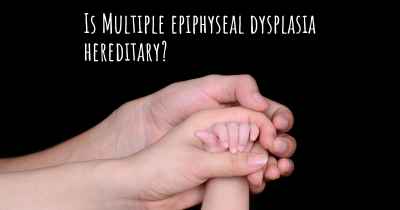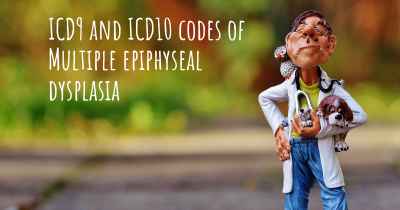What is the history of Multiple epiphyseal dysplasia?
When was Multiple epiphyseal dysplasia discovered? What is the story of this discovery? Was it coincidence or not?

Multiple epiphyseal dysplasia (MED) is a rare genetic disorder that affects the development of the bones and joints. It is characterized by abnormalities in the growth plates, which are responsible for bone growth and development. MED is also known as Fairbank disease, after the British physician who first described it in 1937.
The history of Multiple epiphyseal dysplasia dates back to the early 20th century when Dr. William Fairbank, an orthopedic surgeon, observed a group of patients with similar skeletal abnormalities. He noticed that these individuals had short stature, joint pain, and deformities in their hands, feet, and knees. Dr. Fairbank conducted extensive research and published his findings, coining the term "Multiple epiphyseal dysplasia" to describe this condition.
Since its initial discovery, researchers have made significant progress in understanding the genetic basis of MED. It is now known to be caused by mutations in several genes that play a crucial role in the development and maintenance of cartilage and bone. These genes include COMP (cartilage oligomeric matrix protein), COL9A1, COL9A2, COL9A3, MATN3 (matrilin-3), and SLC26A2 (solute carrier family 26 member 2).
COMP mutations are the most common cause of MED, accounting for approximately 70% of cases. The COMP gene provides instructions for producing a protein that is essential for the normal development of cartilage and other connective tissues. Mutations in this gene disrupt the structure and function of the protein, leading to the characteristic features of MED.
COL9A1, COL9A2, and COL9A3 mutations are less common but can also cause MED. These genes encode proteins that are important for the formation of collagen, a major component of cartilage. Mutations in these genes alter the structure and stability of collagen, impairing its ability to support normal bone growth.
MATN3 mutations affect the production of matrilin-3, a protein that helps regulate the growth and development of cartilage. Mutations in this gene can disrupt the normal functioning of matrilin-3, leading to skeletal abnormalities seen in MED.
SLC26A2 mutations cause a more severe form of MED known as diastrophic dysplasia. This gene provides instructions for producing a protein called diastrophic dysplasia sulfate transporter, which is involved in the transport of sulfate ions into cartilage cells. Mutations in SLC26A2 impair the function of this transporter, resulting in severe skeletal abnormalities.
Over the years, advancements in genetic testing techniques have allowed for more accurate diagnosis of MED. Doctors can now identify specific gene mutations associated with the condition, enabling them to provide more targeted treatment and genetic counseling for affected individuals and their families.
Although there is currently no cure for MED, management focuses on alleviating symptoms and improving quality of life. Treatment options may include physical therapy, pain management, assistive devices (such as braces or orthotics), and, in severe cases, surgical interventions to correct deformities or joint problems.
In conclusion, Multiple epiphyseal dysplasia is a rare genetic disorder that was first described by Dr. William Fairbank in 1937. Since then, significant progress has been made in understanding the genetic basis of the condition. Mutations in genes such as COMP, COL9A1, COL9A2, COL9A3, MATN3, and SLC26A2 have been identified as causes of MED. Advances in genetic testing have improved diagnosis and allowed for more targeted treatment approaches. While there is no cure, management strategies aim to alleviate symptoms and improve the quality of life for individuals with MED.








